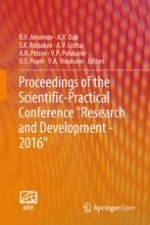Introduction
-
original metal powder chemical: chemical composition, shape and size distribution of particles, the thickness of each melted layer for each production cycle;
-
laser source: type, power, space-energy beam parameters (light intensity distribution, the size of the laser beam spot in the melting zone as a result of its divergence);
-
characteristics of the production process: scanning speed, type of protective gas environment, choice of the type and parameters of the scanning strategy in each melted layer.
Properties of the sample | Material and method of sample production preparation | |
|---|---|---|
SS 136L | ||
SLM | Casting | |
Tensile strength (MPa) | 436 ± 60 | 480–560 |
Yield strength (0.2%) (MPa) | 366 ± 50 | 170–290 |
Elongation (%) | 9 ± 2 | 40 |
Layer thickness (μm) | Horizontal position of sample | Vertical position of sample | ||||
|---|---|---|---|---|---|---|
UTS (MPa) | σ0.2 (MPa) | Elongation (%) | UTS (MPa) | σ0.2 (MPa) | Elongation (%) | |
60 | 720 | 525 | 22 | 690 | 526 | 19 |
80 | 735 | 532 | 32 | 695 | 529 | 16 |
100 | 713 | 528 | 32 | 670 | 518 | 23 |
120 | 700 | 473 | 32 | 660 | 513 | 20 |
150 | 700 | 467 | 35 | 666 | 492 | 25 |
Experiment
Equipment Description
Parameters/name | JSC «NPO «TSNIITMASH» | EOS | SLM-Solutions |
|---|---|---|---|
MeltMaster3D-550 | EOS M 400 (EOS M 400-4) | SLM500 | |
Chamber dimensions, mm | 550 × 450 × 450 | 400 × 400 × 400 | 500 × 280 × 365 |
Number and power of lasers, pc./kW | 1/1 2/0.5 + 1 | 1/1 4/0.4 | 2 × 0.4 (или 2 × 0.7); 4 × 0.4 (или 4 × 0.7) |
Optical system | 3-axis optics/2 × F-Theta | F-Theta/4 × F-Theta, high-speed scanner | 3-axis optics |
Thickness of a layer (μm) | 20–250 | 20–150 | 20–75 |
Productivity (cm3/h) | 15–100 | 100 | 105 |
Dimensions W × D × H (mm) | 2938 × 2040 (2488) × 3000 | 4181 × 1613 × 2355 | 5200 × 2800 × 2700 |
Applied materials | stainless and tool steel, titanium, and titanium alloys, aluminum alloys, superalloys | ||
Delivery dates (months) | 5–6 | 6–7 | 6–7 |
Experimental Technique
Characteristics of the Original Material
Powder | Mass content (%) | ||||||||
|---|---|---|---|---|---|---|---|---|---|
Fe | Cr | Ni | Mo | Mn | Si | P | C | S | |
316L | 66.2 | 19.4 | 11.4 | – | 1.9 | 1.1 | * | * | * |
Methodology of the Study
Density Determination
Mechanical Tests
Results and Discussion
Microstructure Study
Mechanical Tests
Mode | σ0.2 (MPa) | Error (%) | UTS (MPa) | Error (%) | δ (%) | Error (%) |
|---|---|---|---|---|---|---|
1 | 466 | 1.38 | 604 | 2.02 | 18.93 | 2.31 |
2 | 461 | 1.30 | 601 | 1.07 | 16.87 | 2.42 |
